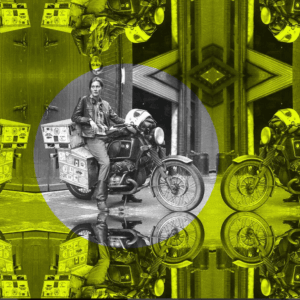A rejection of the open plan and the small breakout spaces of Kirsty Volz’s Two Pavilion House have enabled her to tackle one thing at a time during the COVID-19 lockdown.

Photo by Scott Burrows.
If you’re currently working from home and trying to homeschool simultaneously, you may have uttered the phrase to your child/ren, colleagues or partner, “I can only do one thing at a time”. It’s something that I fondly remember my own mum saying to me and I am certain that my grandmother would have said it to Mum as well.
Over the last two decades I’ve worked, mostly full time equivalent, alongside completing study (a perpetual student). In this time, I’ve learned that whenever I feel frustrated by a task, it’s because I’m trying to complete more than one task at the same time. Sometimes, single tasks mask several smaller tasks and I know that if I try them all at once, I will silently melt down. It’s an approach called micro-productivity, and there is a myriad of software available that can assist with this approach to work (see Trello or Monday.com).
If I’m standing in the kitchen opening the box for a frozen pizza and someone walks in and asks me what the time is, I will feel the spark that is my brain short circuiting. My brain is like a power point – you plug in a double adapter and it will work for a while, but you know that eventually it’s going to overload and cause the switchboard to melt. I know that I am not alone when it comes to a preference for approaching tasks one at a time. Managing to maintain this approach is made especially difficult when dealing with the mental load (or mother load) that is parenting.
I have always been suspicious of the assertion that women, in general, are better at multitasking. There are women who are incredible multitaskers. I am in awe of them. But there are also women, like me, who need to approach one thing at a time. This ended up being a driver to how my partner, David Toussaint, and I designed our house. We avoided an open floor plan and organised each space so that it works with one single function. Our kitchen is its own room. Because the idea that one of us would be cooking while simultaneously observing, let alone supervising, activity in another space was undesirable.

The Two Pavilion House by Toussaint and Volz. Photo by Scott Burrows.
The rejection of the open plan was also driven by my misspent adolescence engrossed in horror and psycho thriller films. This taught me that open plan houses placed women under constant surveillance. That they created spaces where there was nowhere for women to retreat from relentlessly being watched. Probably the film that resonates most in the current climate of COVID-19 is Todd Haynes 1995 film Safe. The film plays on underlying cultural panic around epidemics and pandemics. Julianne Moore plays the role of middle class housewife Carol White who is afflicted by a mysterious ailment, which causes her to react to environmental pollutants. In the beginning of the film, Carol is constantly framed by long shots within her house that slowly pan towards her, creating a sense that she is being watched from a distance from varying locations within the house. This constant surveillance appears to be bound in Carol’s snowballing anxiety as the film progresses. Eventually, Carol escapes to a retreat to recover from her illness. The film poses many questions, but perhaps most pertinently: was the illness caused by Carol’s environment of suburban domesticity or of her own making? You can watch a short analysis of the film by the New York Times in the video below:
Underpinning our approach to designing the house was an undoubtedly feminist lens. We have ongoing conversations about design-led solutions for residential architecture that can better facilitate the equal division of unpaid labour in the home. More than the organisation of domestic chores, our house is also about framing equal opportunities to retreat from, and socialise with, each other.
We are fortunate to have a fully functional office within our house. It is separate from the main house and even requires a short, 20-second stroll to work each day. Our house is called the Two Pavilion House, and the office is situated in the front pavilion. The beauty of this is that at the end of the day we can close and lock the office door and leave our work behind. However, it is not an office that was designed for two full-time workers and a school student. As such, our work has spread into other areas within the house, which means that we are struggling, like many others, to switch off at the end of the day.

The commute to the office. Photo by Nina Hamilton.
When we initially designed our house, we thought of it as a house for introverts, where we sacrificed large open living space to create small breakout spaces for each bedroom. Spaces that can only be occupied by one or two people. However, the purpose of these smaller spaces has really come to the fore in the current circumstances. It has helped us to break up the day and facilitate different types of activities. It means that for a few hours a day we can each retreat to focus on one thing at a time, in our own space, and restore some mental energy. Otherwise, we ask each other for patience and when one of us says “I can only do one thing at a time”, it’s time to reach for the headphones.
Kirsty Volz is a lecturer in architecture and interior design at the Queensland University of Technology. She is a co-director of emerging design practice Toussaint and Volz and a PhD candidate at the University of Queensland.






















